In 1993, Midway Games released the monstrously successful NBA Jam. This was the first time the company had worked with a professional sports organization, and it ushered in a brief period of quasi-sequels in 90s arcades, with games utilizing names and faces from the National Football League, the World Wrestling Federation, and even the National Hockey League.
In the decades that have followed, baseball fans have been scratching their heads, wondering why they didn’t get their own “MLB Jam.” To this day there are references to fantasy versions of what the game might be.

What very few realize is that Midway had indeed been working on a baseball game in the Jam lineage behind the scenes. The game used the same photo capture technology as Jam, had similarly exaggerated movement, and a charismatic announcer of its own (in this case, White Sox legend “Hawk” Harrelson). It was a collaboration between NBA Jam creator Midway Games and Golden Tee Golf creator Incredible Technologies, attempting to combine the best of both worlds.
Cabinets were made and put out for test briefly in the Chicago area before the game was quietly canceled, and with the exception of those few players who happened to play it at the time, the game was never seen, relegated to the occasional rumor or whisper online. Until now.
For the first time since 1996, by way of our Video Game Source Project, here’s Power-Up Baseball.
Recovering a Relic
Those who have been with us for a while might recall the name Chris Oberth, a prolific game developer who unfortunately passed away in 2012. We previously published an article explaining how we rebuilt his unreleased Days of Thunder game for the Nintendo Entertainment System.
A major part of Oberth’s career was at Chicago-based Incredible Technologies, working on titles such as Blood Storm, Time Killers and Shuffle Shot. As we worked with Oberth’s family to catalog and preserve his surviving work, piecing together his source code and arranging the physical artifacts he left behind, we were surprised to find what appeared to be a complete archive of Power-Up Baseball. This was somewhat unusual for Oberth, whose personal archives mostly contained only his parts of a collaborative project like this, meaning only the code he wrote. This archive appeared to have not only source code from his co-engineers, but the in-game art assets as well and, more importantly, the compiled ROMs!
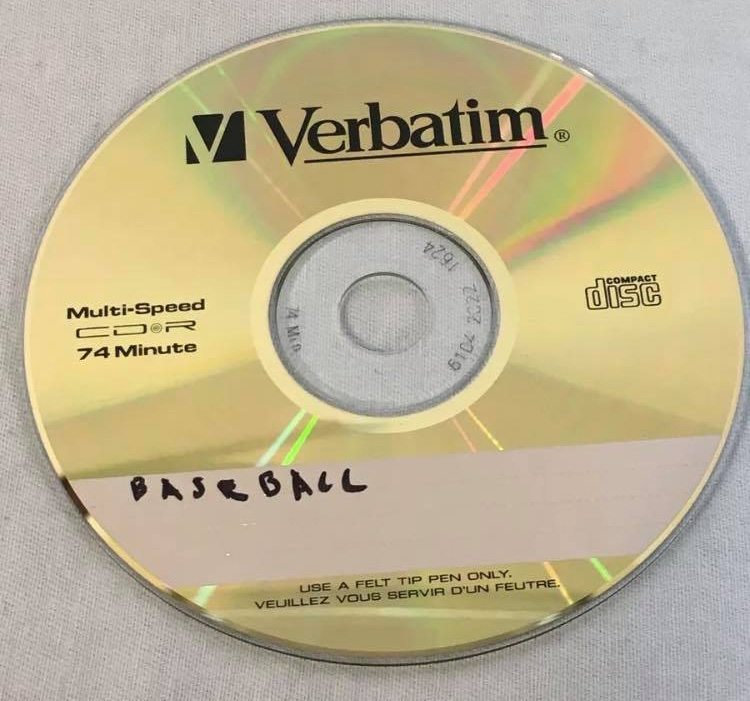
What we have recovered is not only a playable snapshot of the game, but a fully buildable repository. However, all this comes with a caveat – we don’t know exactly when in the game’s development this snapshot was taken. The game was never “finished,” it was canceled before it went into full production, so technically there is no final version of the game. But that said, we have reason to believe that Oberth finished his work on the game and moved on to other projects before it was canceled, while other developers continued to tweak and polish the code in response to public playtests. Whether Oberth archived the game when he was done or when the game was done remains a mystery, and unfortunately he is not with us anymore to let us know. As it stands, this is the only known copy of the game’s code.
If you’ve got more pieces of the game, please get in touch! info@gamehistory.org.
A brief interruption.
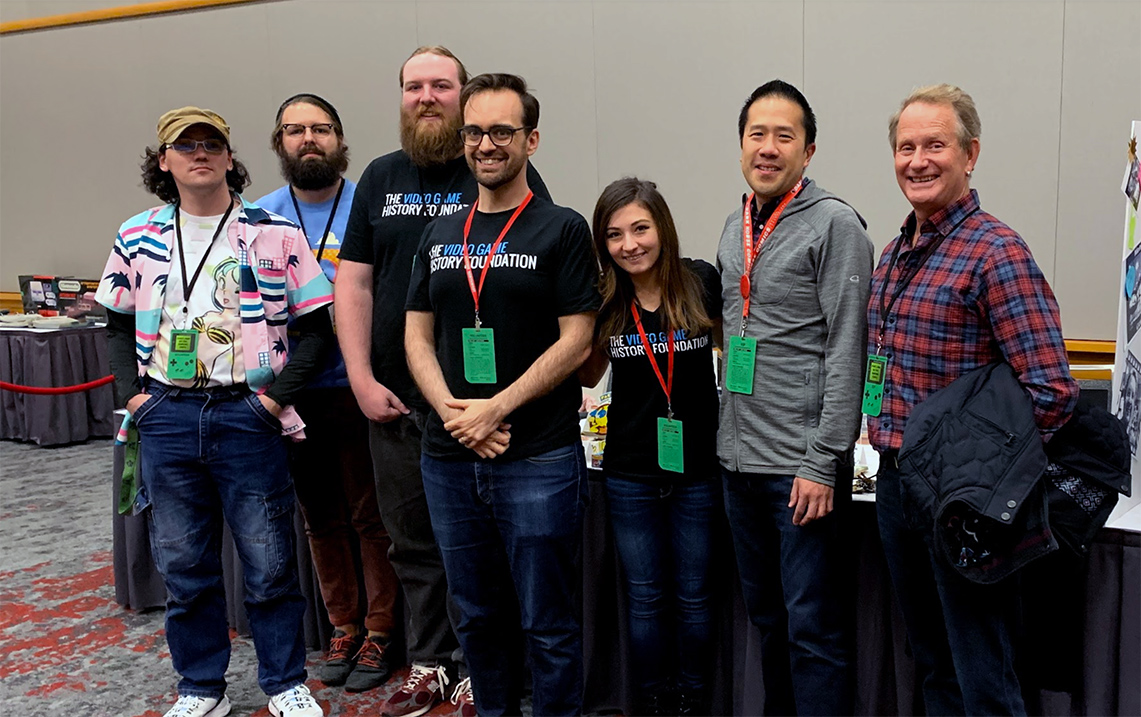
Your generous donations are what keep us going! We are a 501(c)3 charity dedicated to preserving and teaching the history of video games. If you’re able, please consider becoming a sustaining member today, either by credit card, Paypal, or better yet, by joining our Patreon community.
An Oral History of Power-Up Baseball
We were able to speak to four people involved with the game’s development: from the Midway side, designer John Newcomer and marketer Roger Sharpe, and from the Incredible Technologies side, art director Alan Noon and programmer Brian Smolik.
We attempted to contact Incredible Technologies during the creation of this article, as key personnel such as designer Jim Zielinski and programmer Richard Ditton are still at the company, but we did not receive a reply to multiple requests.
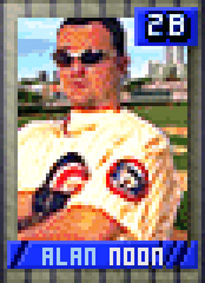
Midway had a tremendous amount of success with NBA Jam, of course, and they were looking to do basically the baseball version of that. So, one of their designers over there, John Newcomer, was looking for a team to help him execute on this idea.
Alan Noon, Art Director (Incredible Technologies)

That’s how it came about. There’s another major sport that we haven’t done. Incredible Technologies wants to do something with us…let’s just give it a try.
John Newcomer, Game Designer (Midway Games)

The Chicago development community was fairly tight-knit in that everybody knew each other. And so he had contacted the owners of Incredible Technologies to see if there was a deal that they could work out where IT would work on the development of this game.
Alan Noon, Art Director (Incredible Technologies)

It was kind of a stealth project because I think almost nobody knew that we’re even working on it.
John Newcomer, Game Designer (Midway Games)

We were big fans of NBA Jam at the studio because, who didn’t love Jam? I mean, that game is still incredible to this day, really. It’s amazing. And for me personally, and for a number of other people at Incredible Technologies, we really viewed Midway as the best of the best. Their commitment to quality in presentation, in graphics, in gameplay was inspiring, really. So the opportunity to work for Midway — work WITH Midway — for a lot of us was a pretty big deal. I was super excited about that.
This was gonna be the next sport within that [NBA Jam] line of products, if you want to call it a line. It was a pretty big deal.
Alan Noon, Art Director (Incredible Technologies)
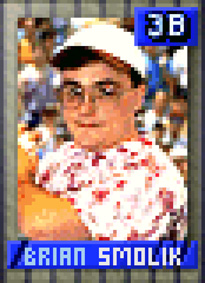
The goal was to be the next great sports game from Midway. It was supposed to be extreme, fun, crazy, and super competitive.
Brian Smolik, Programmer (Incredible Technologies)

All of the digitizing happened at Midway’s digitizing studio. Midway had the top-of-the-line stuff at the time, state-of-the-art equipment for digitizing.
Alan Noon, Art Director (Incredible Technologies)

Part of the hope was that look, we still have all this stuff. We know how to do it. We knew all the tricks.
We had to color isolate, to get different uniform colors for them to represent all the teams in the major leagues. So when we digitized the baseball athletes we had to dye the uniform really weird colors, so they wore like red [undershirts]. And then the short sleeve shirt was green. It was a weird green. The guys look really weird when you digitize them. But then that’s how we could use the different tricks that we knew to be able to then isolate the red, and then change that color palette to be, you know, like blue for the Cubs.
John Newcomer, Game Designer (Midway Games)
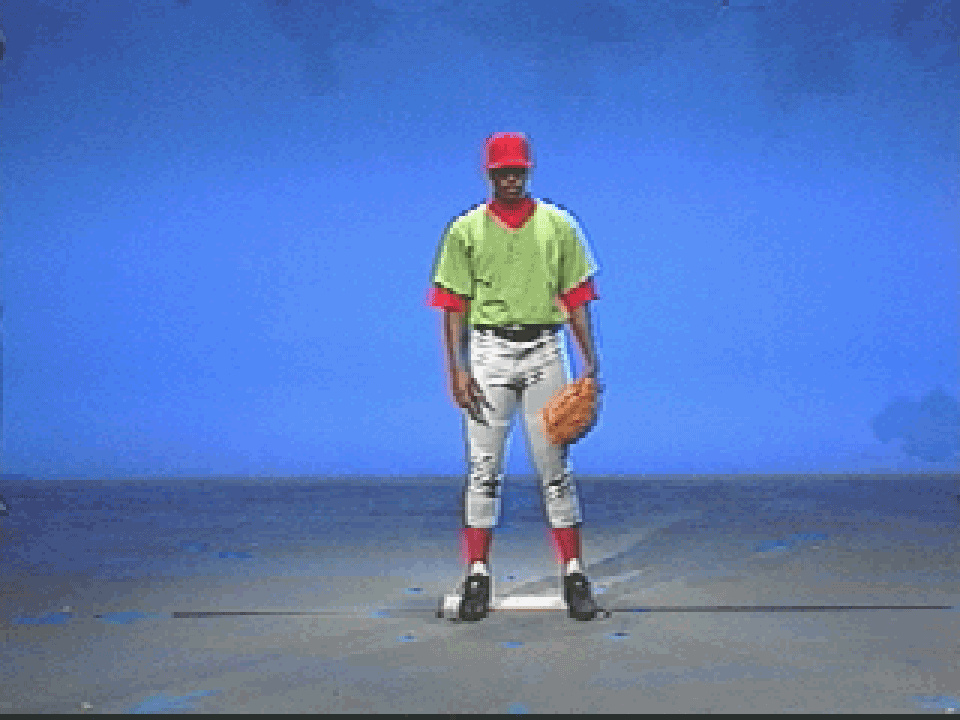

I grew up in South Bend, Indiana, and we had a minor league baseball team there. So we just hired three of their players to come out for a couple of days, so we could digitize them.
John Newcomer, Game Designer (Midway Games)

Major League Baseball didn’t digitize them and send us files, it was pictures for [us] to scan in. And none of the noses came out right. So the artists had to spend all this time adding one pixel, so their faces weren’t just flat, it was crazy. They cleaned up every face from every angle, and it was a lot of work.
Brian Smolik, Programmer (Incredible Technologies)
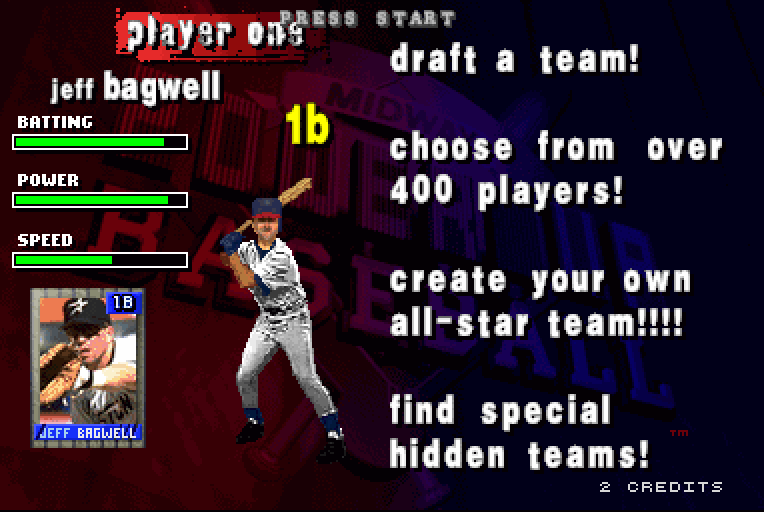

Roger Sharpe was in charge of getting licenses for pinball and video [games]. So it was his job to try to see what kind of deal we could get, and then to tell us what the rules are that we had to obey.
John Newcomer, Game Designer (Midway Games)
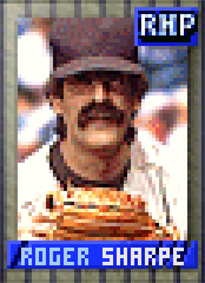
I had relationships with Major League Baseball as well as the Players Association and reached out to them and secured the license.
Prior to and around to spring training, the Major League Baseball photo division goes out and takes pictures for trading cards. So we were able to get the visuals that we could put in on top of our digitized bodies, if you will, and have the players kind of look like the players the same thing that we had done with basketball.
So effectively it was, alright guys here you have all the assets you have all the team logos and all the rest of it and go for it, and development started.
Roger Sharpe, Marketing (Midway Games)

It was supposed to be over-the-top and extreme and all those good things from the ’90s. So, the initial art style that I went with was what was pretty trendy at the time with like, shattered fonts and lots of paint splashes and things like that. That kind of look and feel ran pretty much throughout the game.
Alan Noon, Art Director (Incredible Technologies)

There’s that crazy ball fountain whenever there’s a home run. That was one of my “I made a ball fountain in assembler!” things, I was proud. I thought it was the greatest thing ever. And now I see it and I’m like, this is the stupidest thing I’ve ever seen. They’re just pouring out of the home plate!
Brian Smolik, Programmer (Incredible Technologies)

There’s nobody better than Incredible Technologies at using the trackball, so being able to hit and pitch with a trackball, that was fun!
John Newcomer, Game Designer (Midway Games)

The reason that we went with the trackball — two reasons really — I mean, trackballs are a lot of fun. You get that fast, furious gameplay rolling that thing. And Incredible Technologies had a long history of making really great and fun trackball games.
Alan Noon, Art Director (Incredible Technologies)

Those trackballs took a serious beating if there were two serious people playing. To pitch, the faster you roll that ball, the faster you pitched, and the same with batting. So you had people slamming it as hard as they could. It was super intense. And nobody in the office could concentrate, because down the hall there’s two morons screaming and yelling and beating the heck out of this game.
Brian Smolik, Programmer (Incredible Technologies)

NBA Jam took it over the top. It was spectacular, the ball is on fire. You could do all these outrageous things to make it into an arcade experience. And I think with baseball, yes, that possibility obviously existed, we wanted to do some of that.
Roger Sharpe, Marketing (Midway Games)

You could hit the power-up button and then your pitch would get faster, your swing would be harder. We had specialized bats and stuff like laser swords…that type of thing.
Alan Noon, Art Director (Incredible Technologies)
Special Moves
Midway’s games were known to take sports to their cartoonish extremes, and Power-Up Baseball was no exception. Players could opt into performing special moves, at both the mound and the plate.
Please note that these GIFs were recorded prior to the game’s support in MAME. The graphical errors seen here are not present in MAME.
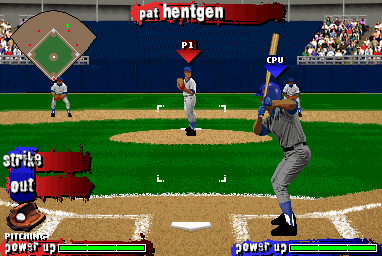
Vintage Pitch
Before throwing a pitch, hold Power-Up and press Second Base.
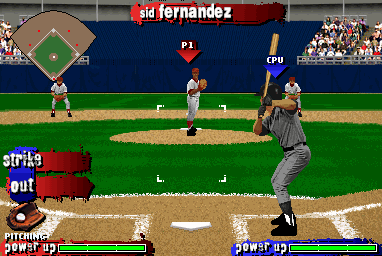
Tornado Pitch
Before throwing a pitch, hold Power-Up and press Third Base.
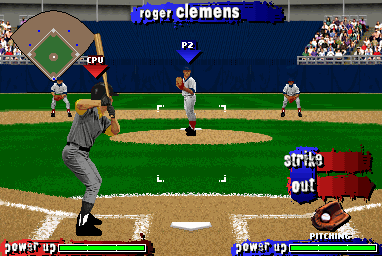
Bean Ball Pitch
Before throwing a pitch, hold Power-Up and press Home Plate.
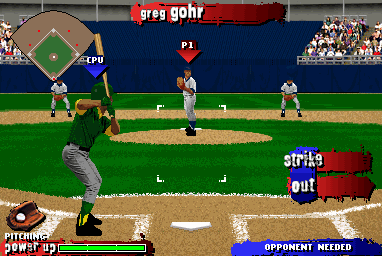
Underhand Pitch
Before throwing a pitch, hold Power-Up and press First Base.
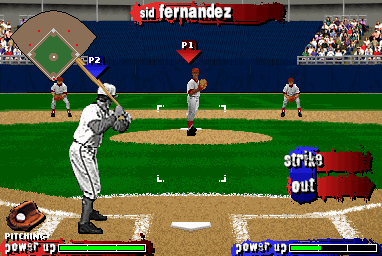
Vintage Swing
Before a pitch is thrown, hold Power-Up and press Second Base.
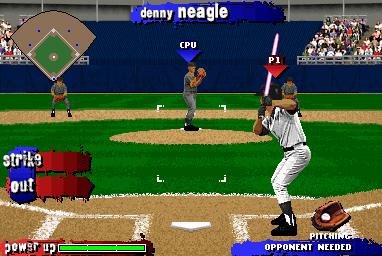
Lightsaber Swing
Before a pitch is thrown, hold Power-Up and press Third Base.
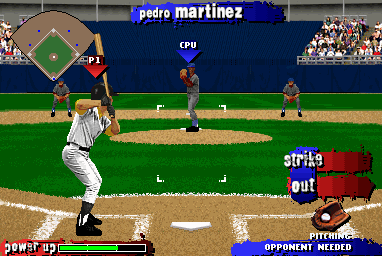
One Arm Swing
Before a pitch is thrown, hold Power-Up and press First Base.
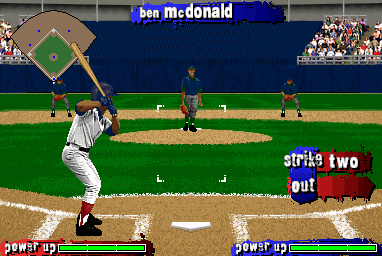
Karate Swing
Before a pitch is thrown, hold Power-Up and press Home Plate. (Note: Karate is what this is called in code)
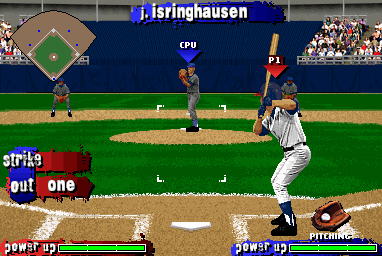
Grab and Toss
As a pitch is coming, while holding Power-Up, roll the trackball backward. The batter will automatically catch the ball and toss it in the air. Swing as usual.

Caveman Swing
Before a pitch is thrown, hold Power-Up and press Home Plate. Only works if the batter is throwing a Bean Ball Pitch.

Some of the stuff we did there was fun. We probably could have taken it further, and gotten it a little more arcade-nutty.
That would have been a polish thing, to add some more.
John Newcomer, Game Designer (Midway Games)

John [Newcomer] would spend quite a bit of time at the Incredible Technologies office, so we’d be all working together. And then the lead designer on the Incredible Technologies side (Jim Zielinski -Ed.) was a fantastic designer. He really has a phenomenal grasp of “feel” and what makes an arcade game great.
I think John had the big picture, and John and Jim would go back and forth and hash things out and constantly iterate with the programmers, and we’d all be playtesting it trying to figure out what worked and what didn’t. Baseball is a very challenging sport to adapt to that kind of fast-play, high-energy kind of format, though.
Alan Noon, Art Director (Incredible Technologies)

There was a lot of tweaking the numbers to get the feeling right. There was a lot of me and John Newcomer playing till 6 am trying to tweak this stuff together.
It was John and the new kid. [My coworkers] would tell me hey Brian, it’s about seven, I think Newcomer is going to be here about eight. See you later! And John would show up with a couple of Slurpees like, here you go, buddy. And he would just sit there and play a little bit, and I would tweak a little bit, and he’d play a little bit. We’d go back and forth, all night, and then about three or four in the morning, we would take as much as we had gotten done and then start to burn them to ROMs. We’d have to compile the code and we’d have to burn all these things. And it just took forever, forever and ever.
We crunched pretty hard but I mean, this was a big deal! This could have been the next Jam! I was a huge Midway fan, that was my goal, to work at Midway. So I was going to pump everything I had into it, I didn’t care about anything else.
Brian Smolik, Programmer (Incredible Technologies)

The batting portion was okay. The fielding portion was, in my opinion, never super fun.
It’s important to note, this was a 2D game. This was on 2D hardware. And there’s a lot of limitations that come with that. You can’t pull the camera all the way back to see where the base runners are while you’re fielding, right? So you’re running around in this what essentially looks like a “Mode 7” sprite-scaled, pixelated outfield, and then in order to figure out what base you want to throw to, you’re looking at a little map down in the corner, like a schematic view with the bases, and so it all kind of felt disconnected. And if you were player two, or the other player, and you’re running bases, you’re not seeing your base runners at that point. So things like that were really difficult to try to sort out and make fun.
Baseball itself, while a fantastic sport, it’s incredibly difficult to translate that into a fast-paced arcade type of experience.
Alan Noon, Art Director (Incredible Technologies)

The game itself was fine. I mean, don’t get me wrong. We liked it.
Roger Sharpe, Marketing (Midway Games)

I liked the game a lot. You were one foot from the person you’re playing. And you’re like, [rolling the trackball] up as fast as you can so your pitcher would go way back, and then down as fast as you can. It was just intense. You’d be covered in sweat after a game. And there was so much trash talking going on. NBA Jam keeps moving super fast. In this, you had a couple seconds between every pitch and every hit. So there was a ton of ribbing in there.
Brian Smolik, Programmer (Incredible Technologies)

We put it out on test in a handful of locations, it didn’t do well and then after a couple of weeks, it was yanked. And we reworked it. And we worked really hard on trying to fix it and make it better and put it out again, and it didn’t earn.
Alan Noon, Art Director (Incredible Technologies)

NBA Jam changed the dynamics for expectations by location owners.
That game was on and being played non-stop. And for Power-Up [Baseball], admittedly, it just didn’t move the needle.
Roger Sharpe, Marketing (Midway Games)

Midway made 14 or 15 machines total. Three of those machines went to Incredible Technologies, and I think Midway had a couple in their famous cafeteria lunchroom for people to play, and the rest had gone out on test.
Brian Smolik, Programmer (Incredible Technologies)
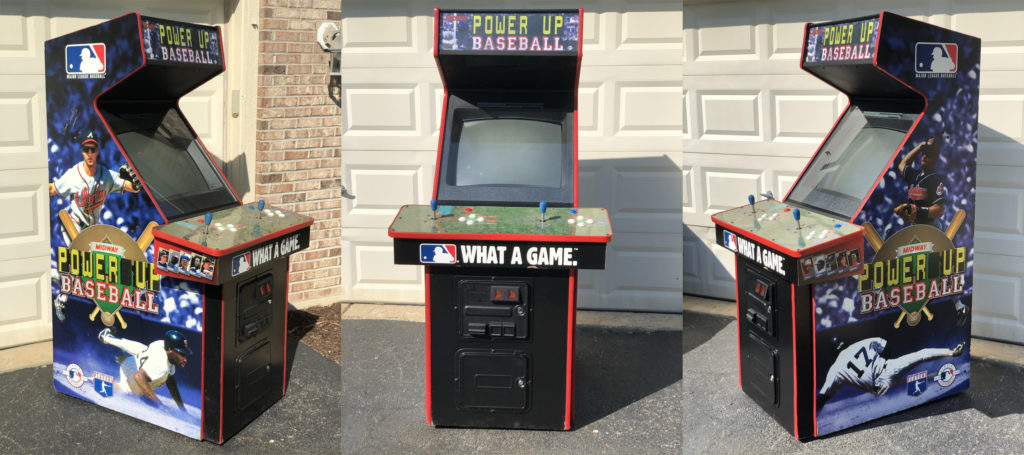

The economy for basketball was easy. You can buy a quarter, you can buy a half or you can buy a full game. You know, the pricing for that as well as just the whole programming and time basis of the game allowed it to be fair value, not only for the player, but more importantly, good earning potential for the location. The same thing for hockey. Want to play one period? Two or three?
Roger Sharpe, Marketing (Midway Games)

Baseball plays as long as a piece of string, right? You know, you can show up, you can have a four-count on every batter. You don’t know how many batters you’re going to face in an inning.
John Newcomer, Game Designer (Midway Games)

[Newcomer] wanted it to be great, he knew it was a good game. I think we just missed a couple things. It was too long – we shortened it down to maybe three innings or something like that. And at some point you could buy one inning at a time. And who’s gonna play one inning, right?
It was great if you could be there for a whole game. But that was like the length of two or three NBA Jams, and that’s tough for anybody to sit through.
Brian Smolik, Programmer (Incredible Technologies)

It’s one thing to put it in a box [for a home console] and sell it for $39. I don’t care how long it takes you to play the game. You’ve made the purchase. But is it a quarter an inning? And nine quarters upfront? Do I give you a discount and it’s $2 to play a nine-inning game versus $2 to play a four-quarter basketball game?
You can have the greatest arcade game known to man. But if it’s going to take 10 minutes to play that game, and it’s going to bring in $1 versus it’s going to take 20 seconds to earn $1, as a location owner, which product am I going to buy?
Roger Sharpe, Marketing (Midway Games)

You can’t predict the gameplay time. And that’s the hidden part of the business, that you have to bring in a certain amount of quarters during primetime at the arcade. And if you can’t control that gameplay time, then you’re dead. And that was ultimately, the big mistake we made. We should have figured that out from the beginning.
That this is something that should have been thought out from day one. Ultimately I should have either said no, let’s not do this project or, let’s figure this thing out first, before we go full speed ahead.
John Newcomer, Game Designer (Midway Games)
Building and Playing the Game
We have contributed to the MAME project and added support for Power-Up Baseball. Additionally, MAME dev TheMogMiner scrambled this week to fix two rendering bugs, so that the game could be represented correctly!
While the game is not yet supported in a released version of the MAME software, you can build your own right now from the project repository. The standard instructions for compiling MAME are here.
There is also a GitHub repository for the game itself, located here. The repository includes build instructions for the game itself – perhaps you’d like to update it and fix some bugs, or simply learn a bit of 68000 assembly!
The repo also contains the pre-built ROMs, ready for use in MAME. Specifically, they are located here.
And finally, if you’d like to create a real arcade board for the game using those same ROM files, those instructions are here.